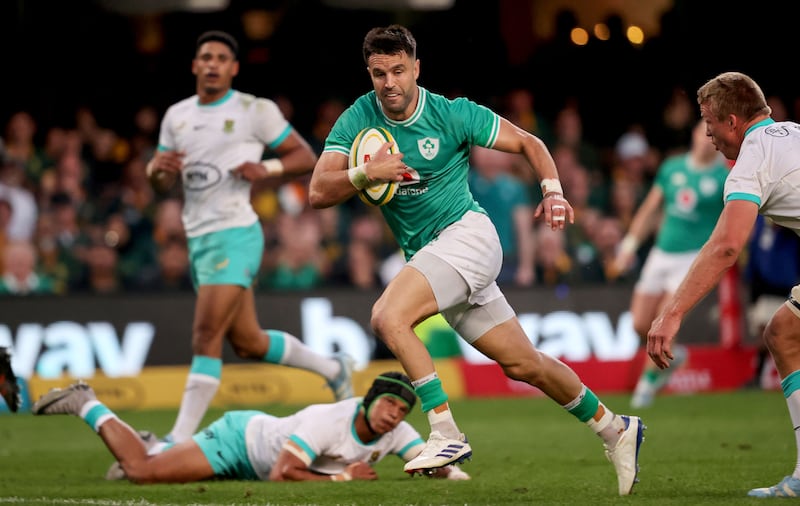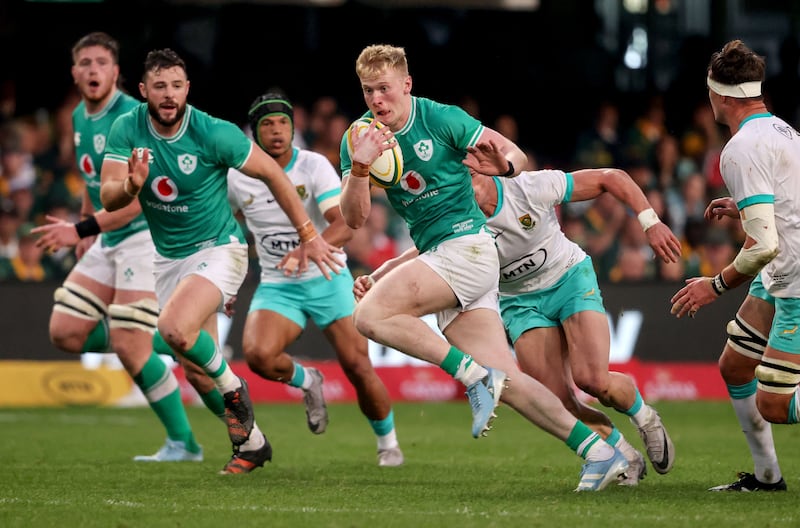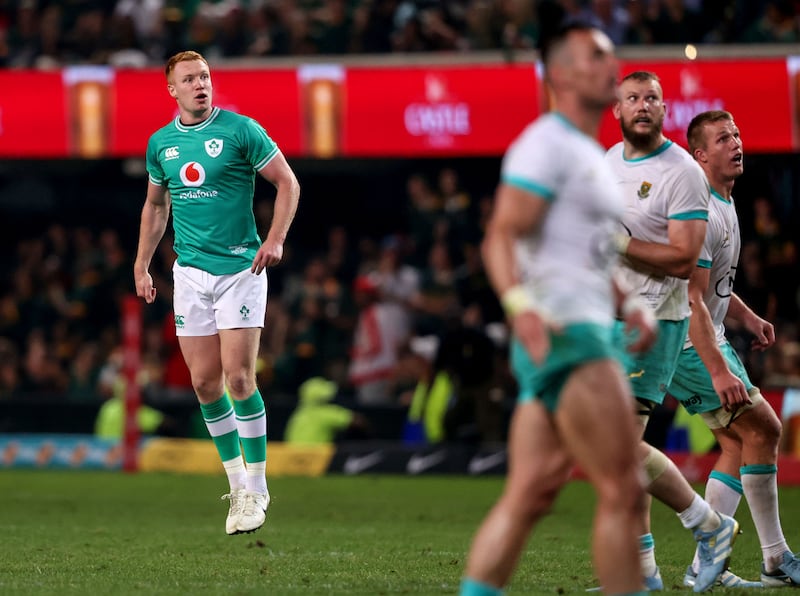In my years of touring with Ireland I never experienced the emotional rush of a season-ending victory on the road against a Tier One nation.
James Ryan alluded to the high of winning where everything is different, not least how you enjoy your holidays. Mentally it makes all the graft worth it, every moment of doubt, disappointment and pain is washed away and subconsciously you look forward to it all starting again.
While success breeding success is not a new or novel concept, American philosopher William Durrant surmised that success generates confidence, which then increases the likelihood of future success.
It has been a mixed year for Irish rugby, no silverware for the provinces, and while Andy Farell’s side did win the Six Nations championship, I think the value of the second Test victory over the Springboks will prove an important springboard as the calendar reverts to normality next season.
READ MORE
The lead up to the series in South Africa was drummed up to be something that it wasn’t, a narrative of an immense dislike between the two teams, fostered by soundbites thrown to the media by South African players that didn’t seem to be founded on anything concrete. However, it managed to generate huge interest.
It reminded me of the Last Dance documentary where Michael Jordan fuelled himself using anger, sometimes creating it artificially when there wasn’t anything of substance.

South Africa were coiled tightly for the opening Test, Rassie Erasmus tapping into that emotional energy, and they played accordingly. However, as I have written before, for any team the danger of being fuelled by emotion is that it is hard to sustain or recreate the following week when you win. The anger, focus or hatred just isn’t as strong.
Ireland, to their credit, did their talking on the pitch, Farrell defusing any reference to Rassie or inflammatory comments by introducing humour and refusing to take offence.
Ireland’s performance in the first Test failed to reach the standard that could realistically put them in a position to win the match; however the character the team showed laid foundations for the second Test.
As is often the case, when a team’s intensity drops by even the slightest amount, it can offer a small opportunity for the other team. It is hard to know from a training week where a team is mentally. However the first five minutes in a match usually tells most of the story.
The opening collision, Tadhg Furlong’s tackle on Kwagga Smith, was followed up by Ryan, who stopped the South African number eight on the gainline and then knocked him backwards. It set the tone for the rest of the match.
The reality is that there is currently very little between these two teams. The Springboks emptied the tank in Pretoria without ever really breaking free of Ireland. The same can be said in the second Test with the roles reversed, Ireland’s first-half dominance not generating enough scoreboard space to distance themselves from their opponents.
It was the rugby that we traditionally associate with South Africa that brought them back into the match at the weekend, not the expansive approach that got so much attention the previous week. Handrè Pollard, Damian de Allende and Jesse Kriel did not get the same time and space that their pack afforded them the previous Saturday; errors ensued.

How South Africa engage with any expansive game plan on a consistent basis will be interesting to note going forward. There is such a contrast between the two styles, the old and new, that I don’t think you can switch seamlessly between them over a season.
South Africa’s ability to generate field position, force penalties and give Pollard the platform to punish Ireland from the tee almost won the game in Durban.
Rassie must decide how far to stray from traditional values to get the best from attack coach Tony Brown and his very different take on the sport. Maybe the return of Canan Moodie and Damian Willemse to complement the instinctive brilliance of young Sacha Feinberg-Mngomezulu will light the way.
Ireland’s reshuffled pack did exactly what it was picked to do, bring the gainline battle to the South African pack, and get on top wherever possible. Which they did to great effect, and the four Irish halfbacks benefited. Conor Murray capped off a fine individual performance with a now standard upfield trailing support line to score.
The try was similar to the one he scored the previous Saturday, in terms of shape with a few different faces in the set-up. Jack Crowley engaged the defence while Jamie Osborne’s running line was hidden initially.
The no-look pass from the Irish outhalf was as important as his ability to deliver it while engaging at least one defender. The trust to leave it hanging in space for Osborne to run on to, made it almost undefendable.
The fullback was a constant threat with the ball, solid aerially, and gave the Irish attack a new dimension. At just 22, and with his future position as of yet undecided, he has made a serious claim to a place in a future Ireland match day 23 when everyone is available.

The same can be said of Ciarán Frawley. The Skerries man showed courage and character to go with technique for those two drop goals in Durban. I wonder how many times he has replayed in his mind that drop goal in the Champions Cup final against Toulouse and what he would have done differently to change the outcome.
When the first drop goal at Kings Park went over and it became a two-point game, Frawley subsequently made good decision after good decision. In the wraparound move from the midfield scrum, the safe option would have been to shift the ball to James Lowe. However the space was in behind, and his grubber kick was perfectly weighted. It enabled Lowe to bundle Cheslin Kolbe into touch.
Frawley then delivered the coup de grace on his terms. It got me thinking, if ever there was a case for more club players, Frawley and Osborne are it.
I wrote last week some of the limitations in our system resurfaced and this week we got to see all of the incredible elements that exist with it. An almost symbiotic relationship between players and coaches that continues to capture our imagination and deliver results time and time again. I hope we are enjoying it as much as they are.
- Listen and subscribe to our Counter Ruck rugby podcast
- Sign up for push alerts and have the best news, analysis and comment delivered directly to your phone
- Find The Irish Times on WhatsApp and stay up to date

















